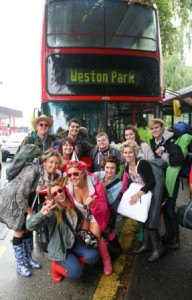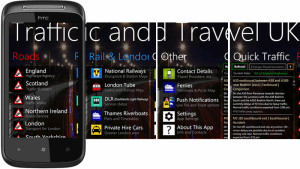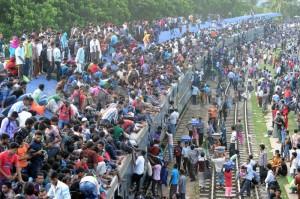Music festival campsites
Ingress
So a promoter has decided to put on a music festival and invited 30 – 50,000 or more friends to join them. They have decided that it would be best if they could all stay there and has found some lovely fields for them to stay in.
At what point do you get involved?
Normally the crowd manager/ head of security will get involved when the site has been designed and it is the closing stages of getting the site signed off. A case of, that is what we have come up with and now you figure out how to get them in and come back to us. In an ideal world they would be involved from the initial point of design, but this would be a rare occurrence.
The initial stages of ingress
There are 3 stages to camping at a music festival.
Transport – It is the middle of nowhere; how do you get there
Entry – The big queue you have to stand in to allow you into the campsite
Loading – you are now in, so where do you camp
Transport
No matter if the festival is in a city or in a field, the paying customers have to get there. Some will make their own way and some will need assistance. No matter what, it has to be controlled and planned for. We have all seen the footage from festivals in the 60’s – Woodstock being a prime example where the roads are congested with vehicles of all shapes and sizes trying to get onto the site.
As a working group the traffic management/transportation plan and strategy should be designed and produced to take into account all parties and the customers.
What should we as crowd managers be looking to achieve?
- The customers arrive at site as close to the entrance as is safe to do so.
- Car Parks should be a safe distance from the campsite entrance to prevent a mix of pedestrian and vehicles.
- A strong private/public transport plan should be implemented – trains and buses especially. The promoter should use mass transit to facilitate the movement of as many customers as possible.
- The transport hubs should be a reasonable distance from the entrance; not too close and not too far. Just enough to create a small walking distance.
- The arrival of customers to site; what time will they get there.
Let us look at this in the DIM model – DESIGN, INFORMATION, MANAGEMENT
Transport design
We are not talking about playing with model train sets or toy cars (no matter how much fun it is). The design of a transport network for a festival site is vital to where we want our customers coming from.
- Is the campsite entrance or entrances near to the main transport hubs? No point in having the entrance miles from the car parks, coach stops. All this will lead to is tired customers from walking a great distance.
- Are the car parks and drop off points all coming from the same direction or do you have them scattered everywhere? If the customers are all approaching from one direction you have more control over them. You are guiding them softly to where you want them to go.
- The loading of the car parks will create a progressive and steady walk up. It should be considered though that the more cars we allow on site, the more stuff the customers can bring. You also run the risk of the drunk driver at the end of the event.
- Private Coach Areas, will allow the transport of multiple groups to site. The area should allow for the coach to be sitting there for a bit as everyone gets off. Your average festival goer will not be the quickest in the world – especially with a can of cider gripped firmly in one hand. An area to allow there processions to be taken off the bus to and made ready for the walk ahead. Have you placed toilets near there? A long bus journey and a few beers can lead to a full bladder. The best planning in the world can be arranged and delivered, but buses always turn up together – so do you have enough space to off load and a stacking area for those that cannot unload yet?
- Do you use trains ? Is the station close enough to walk or is a shuttle bus service in place.
- Where do the loving parents or the mate that you are going to be owed a favour to drop the customers off? Is it up near the car parks and bus drop off?
- Can the local roads handle all the additional traffic you are about to send up and down it. If it is a Green field site it is more likely that this is used by the odd tourist or agricultural traffic pottering about. Are there alternative roads leading to site, because if there is going to be an accident that closes the road; it is going to be when you expect everyone to arrive. Without an alternative plan, you are going to extend your arrival stage due to delays.
Transport Information
- Where is the site; car parks, bus stops, train station and entrance? How do you get to the campsite? What time do I need to be there? This is a good starting point for passing on information.
- Intending on taking a car? Where are the car parks? Does it cost me to park there and do I pay in advance? What is the traffic like – are there accidents, traffic jams or diversions.
- Is there a one way system on the roads outside the festival site?
- Where do I get the coaches to site? Do I just turn up and get on a bus or is it booked in advance?
In the digital age, information, information, information is vital. People consume information in vast quantities each day and you have to provide them with as much as you can.These can either prove useful or a hindrance.
Do you have a plan? When do you initiate this plan; the first event day, the day before the event, the week, the month or the day the first tickets go on sale? The multi agency strategy that has been established for the outer areas of the event will let your customers get to site. You have your part to play in that and that is mostly, when you want them there and how to get them onto site.
What formats have you considered? Printed form, websites and social media or advertisement campaigns? All have an influence on the arrival of the customers.
At no other time have our customers had the ability to receive as much information as they need than now. The digital age is allowing information to be exchanged at a rate and in ways that expand with every year.
Transport Management
- The car parks have to be loaded correctly, order and control of where cars park is vital. Using all the space available. Weather plays its part in this as well; most festival car parks are Green field sites and a bit of rain can turn a beautiful Green field into a marsh in minutes.
- Safe walking routes must be established and enforced to keep the happy camper away from the moving cars and buses.
- The quick turnaround of coaches will assist in a smooth transport network. This is achieved by asking the customer to free up that hand gripping the cider and get all their stuff off the bus.
A good traffic management plan is like watching a production line. An item enters and the start and is then systematically passed through the system till the finished product is produced at the end.








